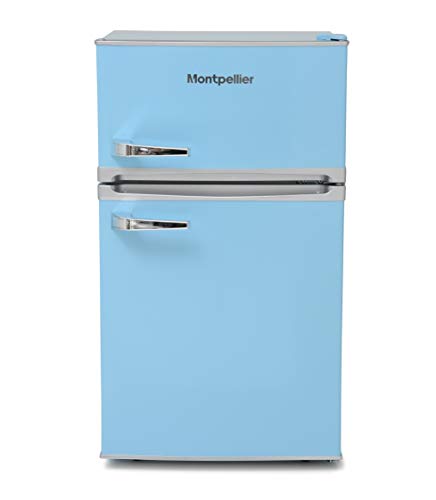MacnaghtenIvy
MacnaghtenIvy发表的博客
Understanding Fridges and Freezers: The Essential Kitchen Appliances
Refrigerators and freezers are two of the most vital home appliances in modern-day kitchens. These appliances serve a crucial function in food conservation and waste decrease by ensuring that disposable products remain fresh and safe for consumption. This post explores the different types of fridges and freezers, their performances, and crucial considerations for selection and upkeep.
Kinds of Refrigerators
The market provides a variety of refrigerator types, each designed to satisfy different consumer requirements. Below is a list of the most common types of fridges:
Top-Freezer Refrigerators
- Most common type.
- Freezer compartment lies above the refrigerator area.
- Typically more economical and energy-efficient.
Bottom-Freezer Refrigerators
- Freezer lies at the bottom.
- Enables much easier access to fresh products at eye level.
- Frequently includes pull-out drawers for better company.
Side-by-Side Refrigerators
- Refrigerator and freezer areas are surrounding.
- Ideal for narrow kitchens and allows easy access to both compartments.
- Typically features water and ice dispensers.
French Door Refrigerators
- Integrates a bottom freezer with double doors at the top.
- Offers sufficient storage and trendy designs.
- Typically includes functions like temperature-controlled drawers.
Compact Refrigerators
- Smaller sized size suitable for restricted areas.
- Frequently used in dormitory, little apartment or condos, or as secondary fridges.
Table 1: Comparison of Refrigerator Types
| Type | Benefits | Disadvantages | Normal Size |
|---|---|---|---|
| Top-Freezer | Cost effective, energy-efficient | Less convenient access to the freezer | 14-30 cu. ft. |
| Bottom-Freezer | Much easier access to fresh food | Freezer can be more difficult to organize | 19-30 cu. ft. |
| Side-by-Side | Easy access, water/ice dispenser | Narrow vs. storage space | 22-30 cu. ft. |
| French Door | Elegant, roomy, arranged | More pricey | 20-30+ cu. ft. |
| Compact | Space-saving, portable | Restricted storage | 1.7-5.5 cu. ft. |
Types of Freezers
Freezers are a similarly important device for food preservation. They come in different styles designed to fit various home needs. Think about the following types:
Upright Freezers
- Run like a standard refrigerator with vertical storage.
- Much easier to arrange with shelves and compartments.
Chest Freezers
- Large, horizontal style normally using more storage area.
- Maintains temperatures better during power interruptions.
- More energy-efficient than upright models.
Portable Freezers
- Compact systems ideal for outside activities or little areas.
- Often used for camping journeys or as short-lived storage.
Table 2: Comparison of Freezer Types
| Type | Benefits | Disadvantages | Normal Size |
|---|---|---|---|
| Upright Freezer | Much easier to organize | Less energy-efficient, more floor area | 5-20 cu. ft. |
| Chest Freezer | Holds more products, energy-efficient | Harder to organize | 5-25 cu. ft. |
| Portable Freezer | Compact and versatile | Restricted storage capability | 1-10 cu. ft. |
Key Features to Consider
When picking a fridge or freezer, customers need to bear in mind several features that can boost functionality:
- Energy Efficiency: Look for designs with the ENERGY STAR accreditation to conserve on electrical power costs.
- Storage Capacity: Evaluate storage needs based on household size and consuming habits.
- Temperature Control: Some appliances use digital controls for accurate temperature settings.
- Adjustable Shelving: Customizable shelving enables ideal organization.
- Water and Ice Dispenser: Offers convenience but can take up important space inside.
- Noise Level: Sound rankings can influence comfort, especially in open-concept homes.
Benefits and drawbacks of Having a Fridge and Freezer
While Best fridges and freezers are important innovations, they also have certain benefits and disadvantages:
| Pros | Cons |
|---|---|
| Protect food lifespan and minimize waste | Require regular upkeep |
| Permit bulk purchasing and meal prepping | Can be pricey to buy and run |
| Deal benefit and fast access to food | Occupy considerable cooking area space |
Upkeep Tips
To make sure longevity and ideal efficiency of fridges and freezers, consider the following maintenance ideas:
- Regular Cleaning: Clean the interior and outside occasionally to avoid accumulation of dirt and bacteria.
- Inspect Seals: Inspect door seals frequently for leakages to maintain performance.
- Temperature Settings: Keep the fridge at 34-38 ° F and the freezer at 0 ° F for optimal food preservation.
- Defrost as Needed: Chest freezers need to be thawed routinely to maintain efficiency.
- Clear Air Vents: Ensure that airflow isn't blocked to improve energy efficiency.
FAQs About Fridges and Freezers
Q1: How long can food be stored in a freezer?A: Most foods can be kept in a freezer for several months. Meats and poultry frequently last 4-12 months, while veggies can last as much as 8-12 months.

Q2: How typically must I clean my fridge and freezer?A: It is suggested to clean your fridge and freezer every 3 to 6 months, or as needed when spills happen. Q3: Can I put hot food directly in the fridge?A: It is suggested to cool hot food to room temperature before positioning it in the fridge to prevent
raising the temperature inside the appliance. Q4: Why is my fridge running constantly?A: This might be due to a malfunctioning thermostat, stopped up coils, or door seals that aren't working effectively. Fridges and freezers are important
properties to modern households, offering vital services for food storage and conservation.
Understanding the various types, features, and upkeep requirements can help consumers select the right appliances for their needs and maximize their performance. Embracing energy-efficient designs not just supports sustainable practices but likewise adds to considerable savings on energy costs, making notified options more essential than ever.
